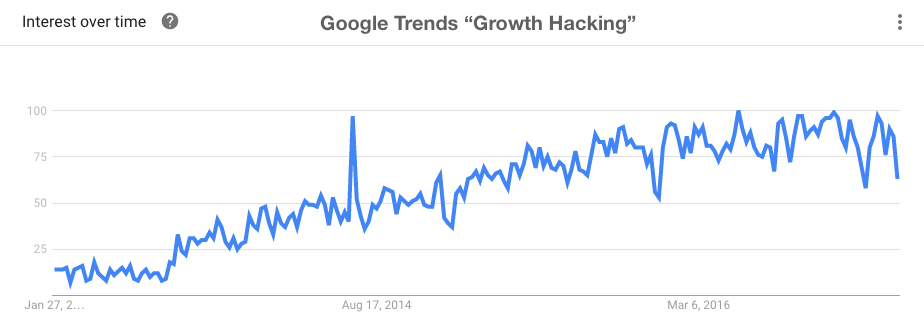‘Growth hacking’ meshes digital marketing with traditional marketing with customer retention and product performance. Growth roles typically apply to the startup world where software and apps are the products because these days, there’s a lot to gain from marketers being close to product development. Ellis saw this as a talent gap. Before aggressively deploying tactics and strategies for growth, they need to have a measurement strategy in place. Common Tools: Google Analytics (for websites and web apps), Firebase (for mobile apps and web apps), Excel, SQL 2. Community Building Building communities, both online and offline, is an important part of a growth hacking because it helps people to begin to perceive your brand as a thought leader. Web analytics can help uncover weak spots in a user experience and devise a hypothesis for what can be done better. Common Tools: Intercom.io, Hotjar, Appsee (mobile apps), Optimizely, VWO 5. Where do growth hackers work? Are you a growth hacker with something to add?
In 2010 Sean Ellis, entrepreneur, angel investor, startup advisor and now CEO of GrowthHackers, coined the term “growth hacker” as someone whose every strategy, every tactic, and every initiative is attempted in the hopes of growing. But that’s pretty vague, right?
Check out the Google Trends graph below. Lots of people are searching for this term, so let’s dig into what it really means.

What is growth hacking, really?
‘Growth hacking’ meshes digital marketing with traditional marketing with customer retention and product performance. Growth roles typically apply to the startup world where software and apps are the products because these days, there’s a lot to gain from marketers being close to product development.
Ellis saw this as a talent gap. He had helped grow many popular startups, like Dropbox and Qualaroo, but had a hard time finding the right talent to support him.
The tactics and strategies they use are simply to reach new customers efficiently, retain existing customers long-term, and build a product that markets and sells itself. For example, if people love the product so much that they are telling coworkers about it, blogging about it, or leaving app store reviews, then marketing somewhat handles itself.
Growth hackers know this and will strive to find optimizations on the product side through quantitative study (ex: web analytics and CRM data) and combine those insights with their market research or discussions with users. You can learn about a few examples of successful growth hacking here.
Qualities of a growth hacker and five top skills they possess
According to San Diego Growth Hacker Dan Greco, the qualities of a growth hacker are simple to understand but often difficult to mimic: “Growth hackers see opportunity where others see challenges, solve problems creatively and collaboratively, empathize with users and try to tie everything back to metrics. Growth hacking is the mindset of never being satisfied.”
It’s great to celebrate wins when the numbers are up, but growth hackers are programmed to always look for opportunities to improve.
Five skills that you’ll need to become a growth hacker include:
1. Web Analytics
Arguably the most important skill of a growth hacker is web analytics and quantitative skills. Before aggressively deploying tactics and strategies for growth, they need to have a measurement strategy in place. In other words, if we deploy this initiative, how will we measure success?
For digital marketing this often lives in Google Analytics or Firebase (for mobile apps) or if the data source feeds into a database, running queries…

COMMENTS